What is a Hawley Retainer? Advantage & 7 Steps to Fabricating
The Hawley Retainer features a metal wire that typically wraps around the six front teeth to keep them securely in place. This labial wire often includes two adjustment loops and is anchored into an acrylic baseplate that rests against the palate. A key advantage of this retainer type is its adjustability—the wire can be fine-tuned to complete orthodontic treatment or make minor tooth movements when necessary.
The article below will walk you through the main components of the retainer and the step-by-step process of fabricating a complete Hawley Retainer.
What is a Hawley Retainer?
The Hawley Retainer is one of the oldest and most widely used orthodontic appliances for maintaining tooth alignment. It is known for its durability and ease of removal, allowing patients to clean their teeth, maintain oral hygiene, and eat comfortably.
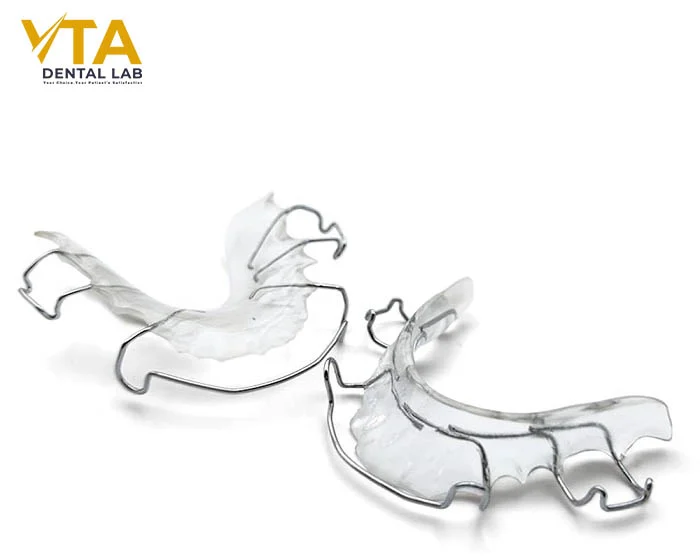
Harley Retainer with polished metal clasps
The basic design of a Hawley Retainer features a labial wire that extends from one canine to the other, helping to stabilize the position of the front teeth. Custom clasps are placed on the molars to keep the retainer in place. There are typically four types of clasps used: ball clasp, C clasp, arrow clasp, and Adams clasp. The standard Hawley Retainer usually features ball clasps positioned between the first molars and second premolars. Both the clasps and labial wire are anchored in a removable acrylic base.
Components of the Hawley Retainer
The Hawley Retainer consists of three main components: the labial bow, clasps, and the acrylic baseplate, along with optional components depending on treatment needs.
Labial Bow
This is a stainless steel wire that runs along the front (labial) surface of the upper anterior teeth. Its primary function is to maintain the position of the teeth after orthodontic treatment. Omega loops are often incorporated on both sides to allow for minor adjustments if needed. The ends of the wire are securely embedded in the acrylic base.
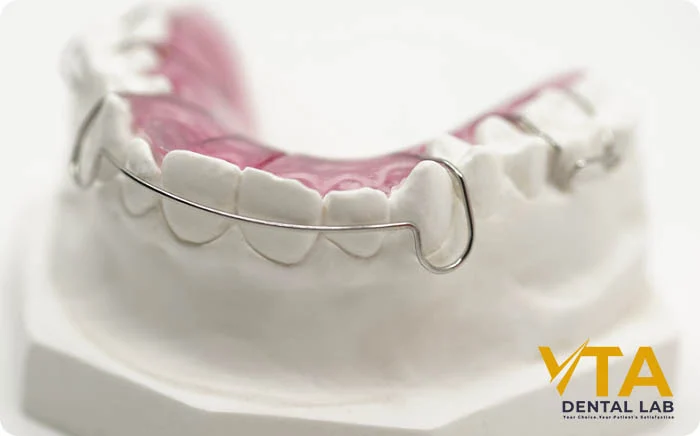
Close-up of a Hawley retainer with an acrylic base and metal wire, placed on a dental model
Acrylic Baseplate
This component is made of acrylic resin and is designed to fit snugly against the palate (for upper retainers) or the lingual surface of the lower arch. It serves as the foundation of the retainer, supporting the wires and clasps while providing overall stability. The acrylic base can be customized to include features such as a bite plane or minor tooth adjustments if required.
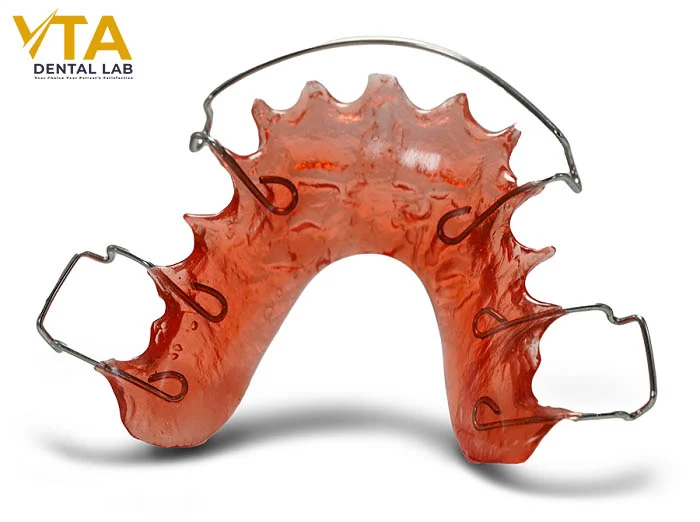
Custom-fit Hawley retainer ensures precise adaptation to the patient’s dental arch
Clasps
Clasps are metal components used to anchor the retainer to the molars, ensuring it stays in place during speaking or eating. Two commonly used types include:
- Adams Clasp: Wraps around the first molar for strong retention.
- Ball Clasp: A simpler clasp with a small ball at the end, often inserted between teeth for passive retention.
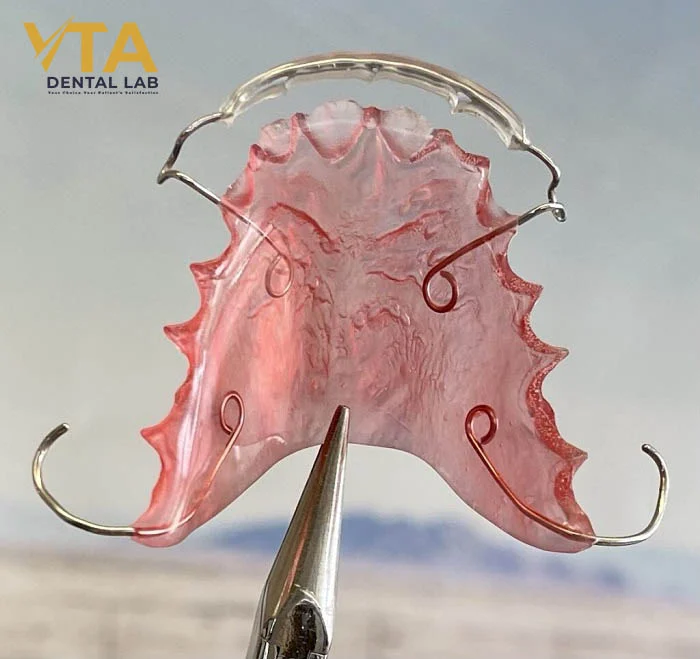
Classic Hawley retainer is known for its strength, durability, and long lifespan
Optional Components
In some cases, a bite plane may be added in the anterior region to help manage deep bites. Springs or adjustment screws can also be incorporated for minor tooth movement during the retention phase.
Advantages and Disadvantages of Hawley Retainers
Advantages
- Simple construction: The design is straightforward to fabricate.
- Laboratory-fabricated: Made entirely in the dental lab, which helps reduce chair time for both the patient and the clinician.
- Removable: Patients can easily take the appliance out for brushing, flossing, eating, or social occasions, promoting better oral hygiene and comfort.
- Rigid acrylic base: The palatal acrylic provides strong anchorage and helps maintain any transverse expansion achieved during treatment.
- Faster vertical settling: Unlike vacuum-formed retainers that cover the entire occlusal surface, the Hawley allows for more natural vertical settling of the teeth.
- Highly versatile: The appliance can be easily adjusted or modified during the finishing stages of treatment or for minor corrections.
- Durable: With proper care, a Hawley retainer can last for several years, making it a long-term and cost-effective solution.
Disadvantage
- Aesthetic concerns: The labial wire can be visible when speaking or smiling, which may be less appealing to some patients who prefer a more discreet option.
- Speech interference: Some patients may experience temporary speech difficulties due to the acrylic palate, especially in the initial adaptation period.
- Requires patient compliance: As a removable appliance, its effectiveness depends heavily on the patient’s commitment to wearing it as instructed.
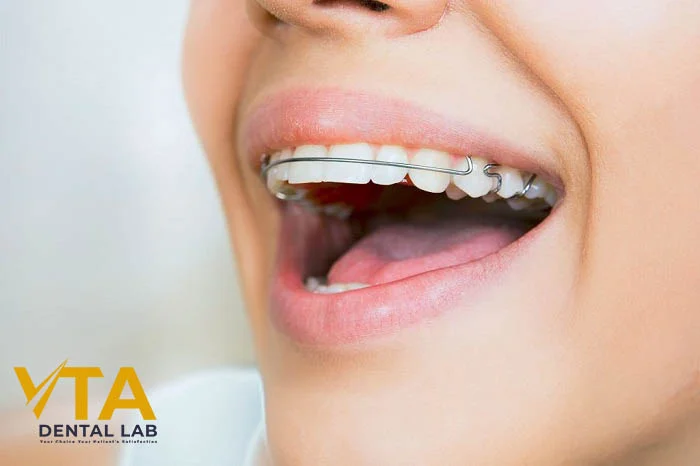
High-quality Hawley retainer with smooth acrylic surface for comfortable daily wear
How to Fabricate a Hawley Retainer
The dental lab technician begins by preparing the working model. Using a carving knife, all air bubbles and imperfections along the gingival margins are carefully removed. The interproximal areas of the posterior teeth are then trimmed to accommodate the placement of the clasps. Eliminating these imperfections ensures a precise fit for both the labial bow and the clasps.
Next, the technician bends the labial bow wire carefully from canine to canine, incorporating U-loops (omega loops) at the canines to allow for adjustments. Once positioned, the tags at each end of the wire are passed through the interproximal spaces and set approximately 1 mm away from the palate.
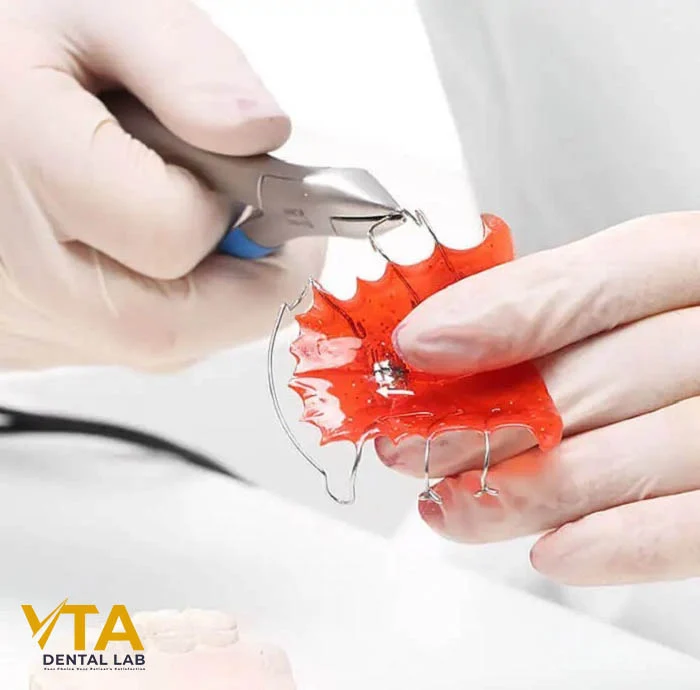
Laboratory technician adjusting the wire of a custom-made Hawley retainer
Ball clasps are then inserted into the interproximal areas between the second premolars and first molars. Each clasp tag is adapted to fit the palatal surface, also maintaining a 1 mm clearance from the tissue.
After the wires are properly fitted, they are temporarily removed, and a separating medium is applied to the model. The wires are then re-positioned, and hot wax is used to secure the labial bow in place on the facial surface. The same waxing process is repeated to fix the ball clasps on the palatal side.
The model is then soaked in water to prevent air bubbles during the acrylic processing and pressure-curing phase.
The technician removes the model from the water and incrementally applies acrylic polymer to form the baseplate to the desired thickness. The assembly is then placed in a pressure pot for curing, ensuring the acrylic hardens completely and evenly.
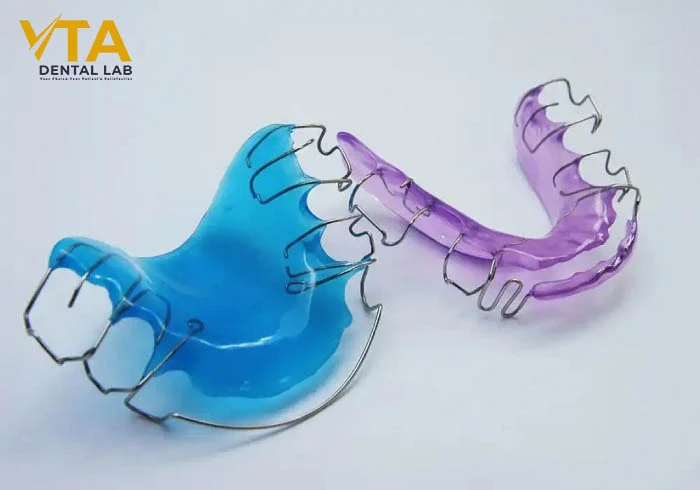
Hawley retainer with transparent acrylic base and precisely shaped Adams clasps for molar grip
Once cured, the retainer is removed from the model. Excess acrylic is trimmed to ensure a proper fit along the gingival margins. The palatal acrylic is also refined to remove any sharp edges that could irritate or damage the oral tissues.
The final step involves polishing all surfaces of the Hawley Retainer using a soft brush and polishing compound. Once polished, the retainer is inspected, packaged, and delivered to the dental clinic.
In Conclusion
The Hawley Retainer is highly effective, particularly because the labial bow can be adjusted to make minor corrections to the alignment of anterior teeth. The fabrication process demands high precision and meticulous attention to detail to ensure a comfortable and functional appliance.